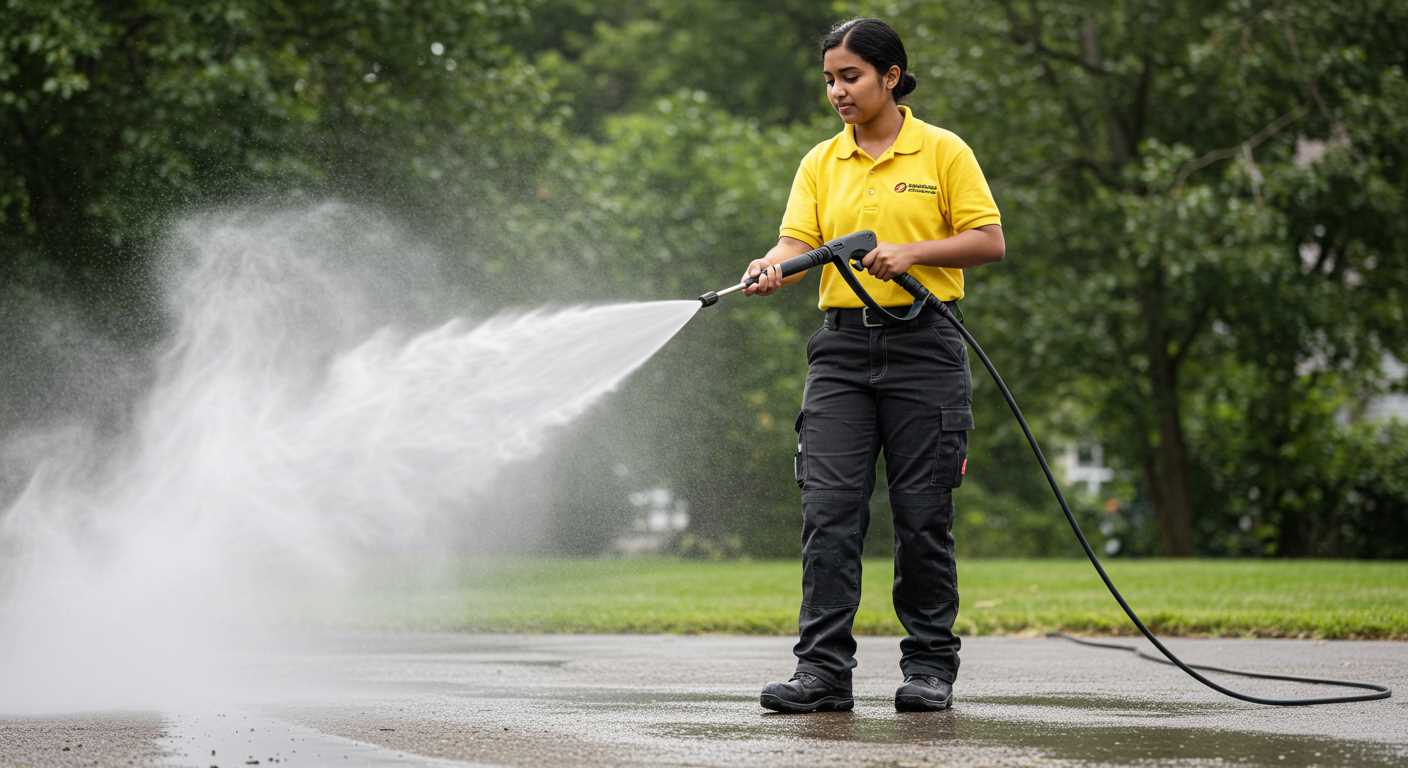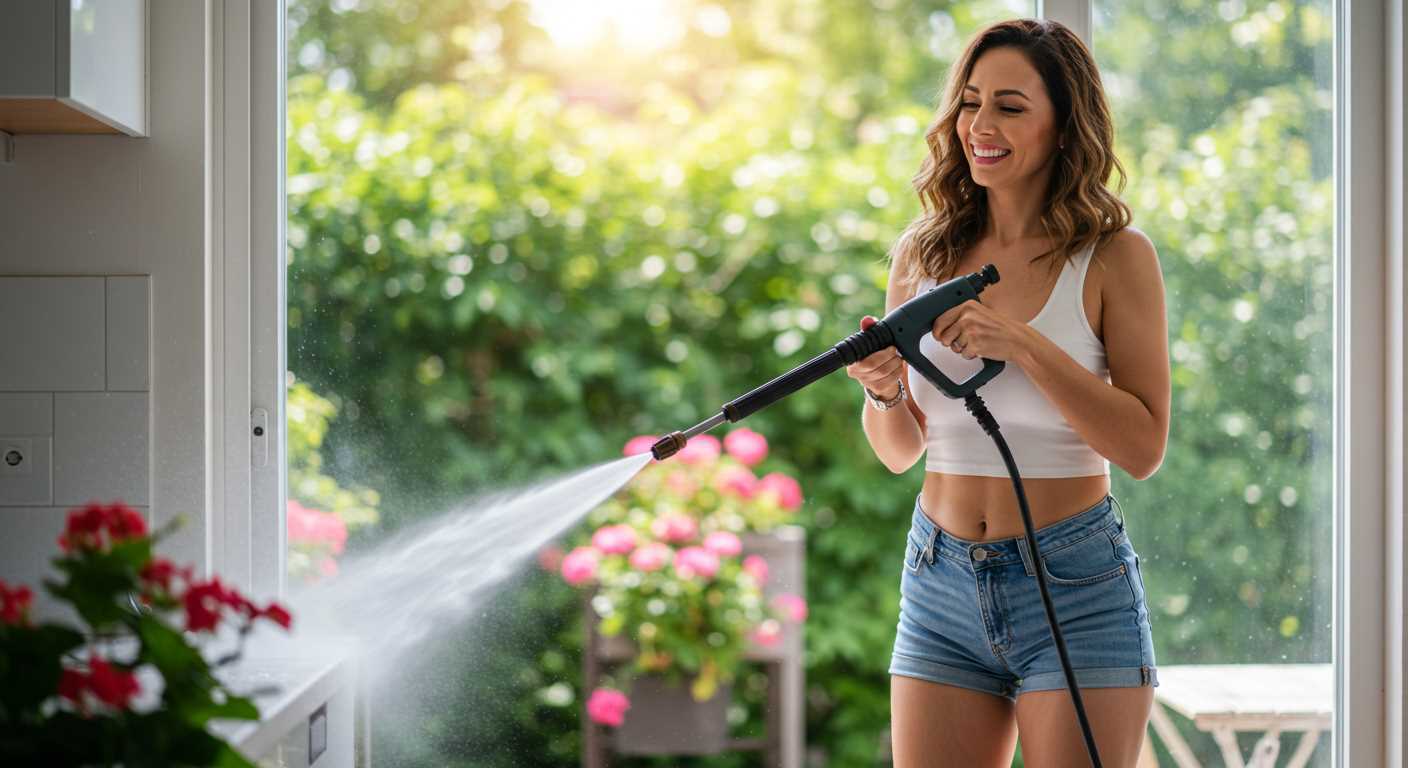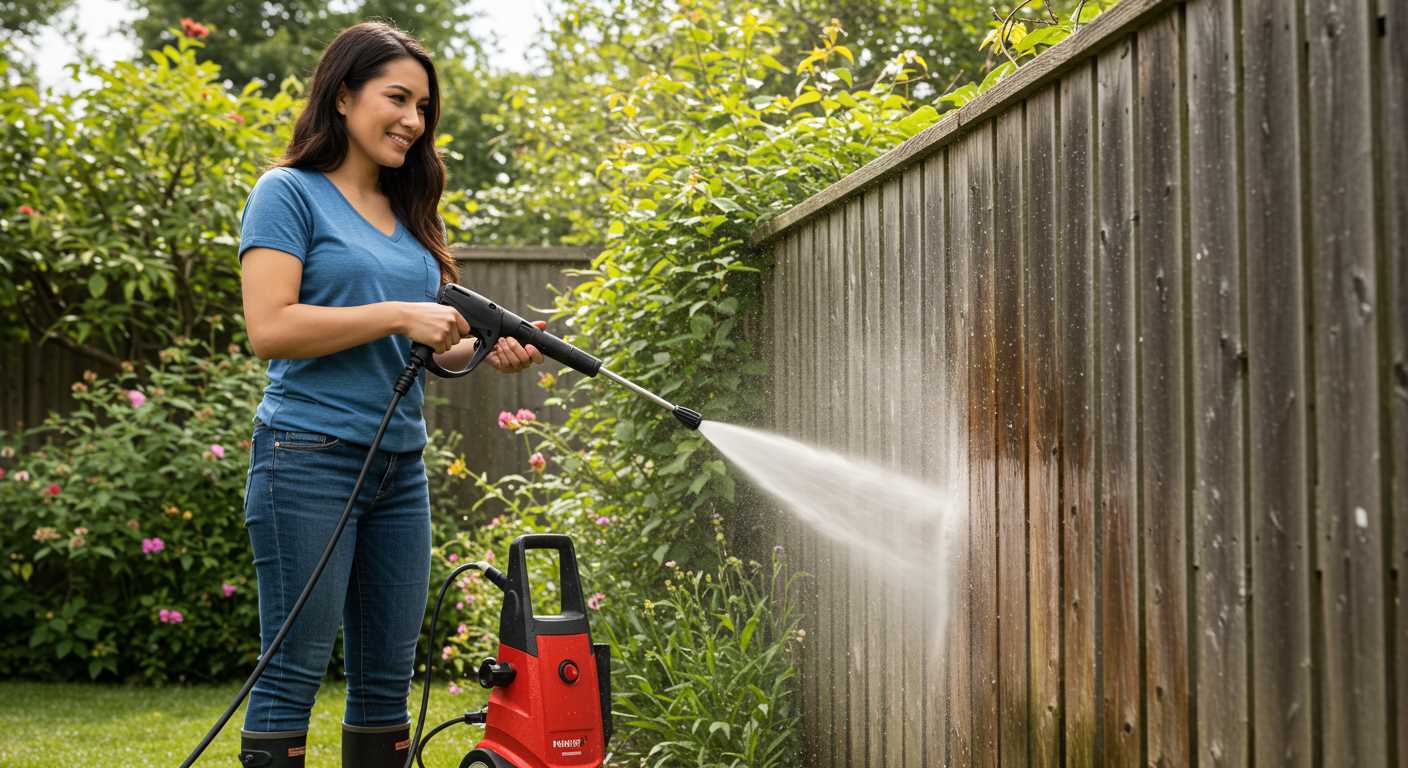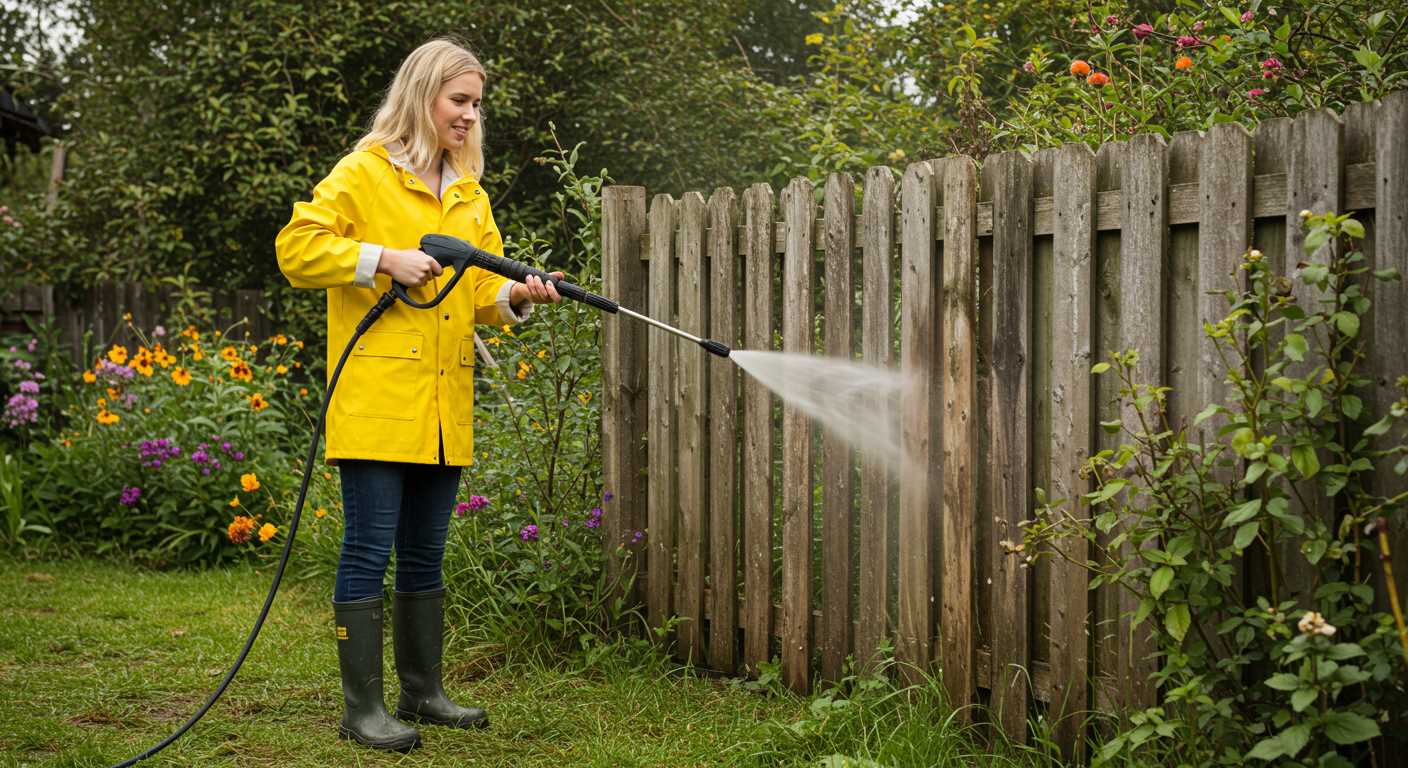First, ensure you switch off your cleaning device and unplug it from the power source for safety. Locate the quick-release mechanism, typically situated where the cleaning attachment connects to the machine. Press or pull the release lever to disengage the fitting quickly, avoiding any struggle or damage.
Next, inspect the connector for any residual water; it’s advisable to have a cloth handy to wipe away excess moisture. Once detached, be cautious with the ends to prevent any dirt or debris from entering the nozzle, which could hinder performance. Store the component in a clean, dry place until it’s required again.
Should you encounter resistance during this process, check for any locking features that may need adjustment or rewriting of your approach. Regular maintenance can prevent future complications, keeping your equipment in peak condition for all your cleaning tasks.
Detach the Water Supply Line from Your Cleaner
First, ensure that the device is turned off and unplugged to guarantee safety. Next, locate the connection point where the water supply line attaches to the unit. This connection typically is a threaded fitting.
To disconnect, hold the base of the fitting securely with one hand to prevent it from rotating. With the other hand, turn the connector counterclockwise until it loosens. If you experience resistance, check for any locking mechanisms or additional clips that might need releasing.
After the connection is free, gently pull the line away from the outlet. Avoid using excessive force, as this could damage the seals or connectors.
Unfasten the High-Pressure Line

Locate where the high-pressure line connects to the machine. Similar to the water supply, you will find a threaded connection here as well. Grip the fitting firmly and turn it counterclockwise to unscrew it slowly. If you encounter tightness, consider lubricating the threads slightly with a suitable lubricant. This will make the process smoother.
After detachment, inspect both the fitting and the line for any signs of wear or damage. Maintaining these components ensures optimal performance for future operations.
Identifying the Correct Connection Type
Before attempting disconnection, recognise the type of fittings your equipment uses. Most models have either quick-release or screw-on connections.
Types of Connections
- Quick-Release Fittings: Often found in newer models. Look for a circular button or lever that, when pressed or pulled, allows for swift detachment.
- Screw-On Fittings: Require twisting to loosen. Turn counterclockwise to break the seal before pulling apart.
Check the manufacturer’s manual for diagrams. Additionally, inspect visually for any unique features that distinguish your model. If unsure, consult online forums or groups dedicated to cleaning equipment where users share tips and experiences.
Tools for Identification
- Wrench: Useful for loosening stubborn connections.
- Adapter Kits: If using multiple attachments, a kit may help adapt to various connection types.
- Visual Guides: Many brands provide online resources illustrating different connection styles.
Being informed about your specific connection system streamlines the process of disconnection and helps prevent damage to fittings or equipment.
Preparing the Pressure Cleaner for Hose Disconnection
Switch off all operations and disconnect the power supply to ensure safety during preparation. Make sure no water is flowing through the equipment as this can lead to accidents or injuries.
Next, if your device has a built-in pressure release system, activate it to relieve any built-up pressure within the system. This step is critical for ensuring a smooth disconnection process.
Once pressure has been released, inspect all connections. Identifying any attachment points will help in understanding how to effectively detach the tube. Pay attention to any locking mechanisms or clips that may need to be disengaged before attempting to separate the equipment.
Keep a clean workspace by removing any debris around the attachment points. This allows for easier access and minimizes the risk of causing unintended damage during disconnection.
If applicable, have a towel or basin ready to catch any residual water that may leak out during the separation. Preparation prevents spills and maintains a tidy area.
Lastly, ensure you have the right tools on hand, such as pliers or wrenches, if your connections require additional assistance to loosen. Being properly equipped will streamline the process and reduce frustration.
| Step | Description |
|---|---|
| 1 | Switch off operations and disconnect power supply. |
| 2 | Activate pressure release system to relieve trapped pressure. |
| 3 | Inspect connection points and any locking mechanisms. |
| 4 | Clear workspace of debris for easier access. |
| 5 | Prepare towels or basins for any residual water. |
| 6 | Gather necessary tools for disconnection. |
Tools Required for Hose Detachment Process

Gather adjustable wrenches in various sizes for different fittings. These are crucial for loosening tight connections without causing damage.
Use pliers to help grip and twist stubborn attachments. Their versatility allows for better leverage when working with tougher joints.
A soft cloth can prevent scratches on surfaces and fittings while providing extra grip when handling connections during disassembly.
Having a bucket or tray handy to collect any residual water prevents spills and keeps your workspace neat. This is particularly useful when disconnecting components.
Consider using a pair of gloves for added grip and to protect your hands while working with potentially sharp edges or dirty parts.
If available, a lubricant spray can be used on threaded connections to make unscrewing easier, especially if the fittings are corroded or have been in place for a long time.
Step-by-Step Guide to Disconnecting the Hose

Begin with powering off the machine and detach the power supply cord. Make certain to release any stored pressurised water before proceeding.
Next, locate the connection points. Focus on the nozzle, where the flexible tubing meets the unit. Depending on the model, you may encounter either a quick-connect system or screw-type fittings.
- If a quick-connect mechanism is present, simply press the release tab while pulling the connection apart.
- For screw-type fittings, grasp the connection firmly and turn counter-clockwise until it loosens. Use a wrench if assistance is required to grip the fitting securely.
After disconnecting from the machine, proceed to the other end. Identify the coupling attached to the water source.
- For quick-connect systems here as well, press the release mechanism and gently pull apart.
- In case of threaded connections, repeat the same counter-clockwise rotation to free the tubing.
Inspect for any debris or blockages at both ends before storing or replacing. Ensure all components are clean to prolong longevity.
Finally, allow any residual moisture to evaporate. Store the equipment in a dry place to prevent damage.
Common Issues Encountered During Hose Removal
One of the frequent frustrations arises from stubborn fittings that seem welded in place. This often happens if connections haven’t been regularly lubricated. A simple application of a penetrating oil can help ease the removal significantly.
Next, water retention can cause difficulty. Ensure all pressure has been released and water is drained before trying to detach any components. A sudden release can lead to unexpected bursts, potentially causing injury or damaging the equipment.
Connection Type Compatibility
Incorrectly matching connection types can result in excessive pressure or leaks. Familiarise yourself with the specific fittings used on your apparatus and verify any attachments are suitable before executing disconnection.
Obstructions and Damage
Inspect for any debris or kinks within the attachment area. Clogs from dirt or damage to the fittings are common culprits that must be addressed prior to attempting detachment. These obstructions may require cleaning or replacement of certain parts to facilitate a smooth separation.
Lastly, if you encounter resistance, avoid using excessive force as this can lead to breaks or further complications. Instead, reassess the situation to identify the underlying cause and address it methodically.
Post-Removal Maintenance Tips for the Pressure Cleaner

Regularly inspect all connections for wear and tear. This prevents leaks and ensures optimal function during future use.
Clean the intake filters frequently. Debris can accumulate, affecting performance. A quick rinse can do wonders.
Check the O-rings and seals for any signs of cracking or dryness; replacing them as needed maintains airtight connections.
Store equipment in a dry, shaded area when not in use. This protects components from weather-related damage.
Run a detergent through the system if available. This helps eliminate any residual grime within the internals, promoting longevity.
Exercise care when handling attachments. Dropping or mishandling can lead to unnecessary damage that may require costly repairs.
Periodically consult the manufacturer’s guidelines for any model-specific maintenance procedures. Keeping up with recommendations ensures reliable operation.
Finally, keep all tools and accessories organised and easily accessible. This not only saves time but also reduces the risk of misplacing crucial components.
FAQ:
What tools do I need to remove the hose from my Karcher pressure washer?
To remove the hose from your Karcher pressure washer, you typically need just your hands, as the hose is designed to be detachable without the need for tools. However, having a cloth handy can help you grip the hose in case it is slippery. In some models, you may encounter a securing collar or a connector that can be loosened by hand, depending on the specific model of your pressure washer.
Can I remove and replace the hose on a Karcher pressure washer without any experience?
Yes, you can remove and replace the hose on your Karcher pressure washer without prior experience. Most Karcher models feature a user-friendly design that allows for easy disconnection of the hose. Just make sure the machine is turned off and depressurised before you attempt to detach the hose. Follow the manufacturer’s guidelines in your user manual for the best practices specific to your model.
What should I do if the hose is stuck on my Karcher pressure washer?
If you find that the hose is stuck, first ensure that the machine is turned off and unplugged. Check for any twist or bent areas in the hose that may be causing the issue. If it’s still resistant, try gently twisting it while pulling to release any built-up tension. Avoid using excessive force, as this could damage the connector. If necessary, consult your user manual or contact customer support for further assistance.
How often should I remove the hose from my Karcher pressure washer for maintenance?
It’s a good idea to remove the hose periodically for maintenance, ideally after every few uses. This helps to prevent blockages and allows you to check for wear and tear. While you don’t need to detach it every time you use the pressure washer, being proactive about maintenance will extend the lifespan of both the hose and the machine.
Is there a specific technique to reattach the hose to the Karcher pressure washer?
Yes, reattaching the hose is quite straightforward. Align the connector on the hose with the fitting on the pressure washer and push it in firmly until you hear a click or feel it lock into place. Make sure it is securely attached before turning on the machine. If your model features a locking mechanism, be certain that it is engaged to prevent any leaks during operation.







